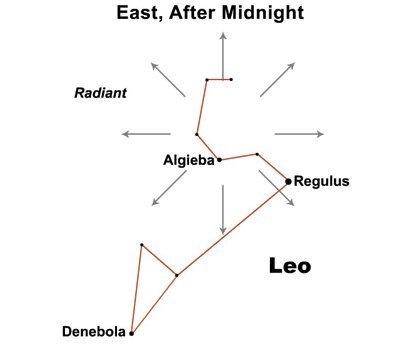354. We can count ahead from glyph 295 (→ 10 synodic lunar months) in the G text, i.e. Gb3-5 ("February 2, 365 + 33 = 398), to a similar full moon 'chapel' in line Ga1-16.
 |
| Ca7-24 (192) |
| te hare pure e tagata noho ki roto |
| ι Crucis (192.2), β Muscae (192.5), Mimosa (192.9) |
| Hare. House, family, home. Vanaga. House, cabin, habitation, building, hut, structure; hare iti, hut; hare itiiti no, cabin; hare kahu, tent; hare neinei, latrine; hare no iti, cell; hare nunui, palace; hare pohurihuri, prison; hare pure, chapel, church; ki te hare, at home. Harepepe, kelp. Harepiko, a. asylum, place of refuge; b. ambush, snare. Harepopo, shed. Harepopokai, storehouse. Churchill. |
| ... Mimosa (β in the Southern Cross) was a name which meant the death was only a temporary stage in life. Mimosa was at the end of the Cross, as if marking a place of resurrection: 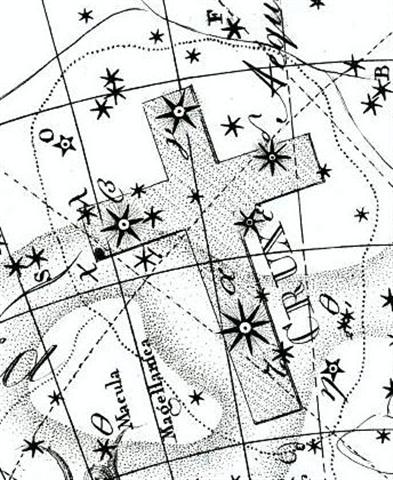
... The Sensitive plant (Mimosa pudica L.) is a creeping annual or perennial herb often grown for its curiosity value: the compound leaves fold inward and droop when touched, re-opening within minutes. Mimosa pudica is native to Brazil, but is now a pantropical weed. Other names given to this curious plant are Humble plant, TickleMe plant, Shame plant, Sleeping Grass, Prayer plant, Touch-me-not, Makahiya (Philippines, meaning 'shy'), Mori Vivi (West Indies), mate-loi (false death) (Tonga) ... In the evening the leaflets will fold together and the whole leaf droops downward. It then re-opens at sunrise ... |
And given there was a 'zero' position at the beginning of side a, the measure will then be 175 + 17 = 192 (= 6˝ * 29˝ + Ľ):
| CLOSE TO THE SUN: |
174 |
| 12-22 |
12-23 |
12-24 |
12-25 → 300 |
12-26 (360) |
12-27 |
| JAN 6 |
7 (372) |
8 |
9 |
10 (*295) |
11 |
 |
 |
 |
 |
 |
 |
| Gb3-1 |
Gb3-2 |
Gb3-3 (64) |
Gb3-4 |
Gb3-5 (295) |
Gb3-6 |
| ο Gruis, Snowball Nebula = NGC7662 Andromedae (355.0), τ Oct. (355.3) |
no star listed (356) |
ι Phoenicis (357.3), ι Piscium (357.4), λ Andromedae (357.9) |
λ Piscium (358.0), MANUS CATENATA (Chained Hand) = ι Andromedae (358.1), ALRAI (Shepherd) = γ Cephei, θ Phoenicis (358.4), κ Andromedae (358.7) |
ω Aquarii (359.2), 78 Pegasi (359.5) |
ψ Andromedae (360.1), σ Phoenicis (360.4) |
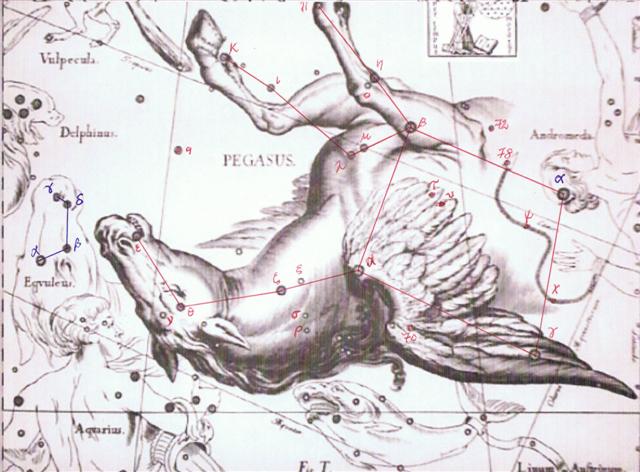 |
| March 11 (*355) |
12 (436) |
13 |
3-14 (73) |
15 |
16 (*360) |
| °March 7 |
8 |
9 (68) |
10 (*354) |
11 |
12 (436) |
| 'Febr 12 |
13 |
2-14 (45) |
15 (*331) |
16 |
17 (413) |
| "Jan 29 (*314) |
30 |
31 |
"Febr 1 (32) |
2 (398) → Jupiter |
3 |
| CLOSE TO THE FULL MOON: |
| 6-22 |
6-23 |
St John's Day |
6-25 (*96) |
6-26 (177) |
6-27 |
| JULY 7 |
8 |
9 |
10 (*111) |
11 |
12 (193) |
| γ Crateris, π Centauri (172.0), κ Crateris (172.5), τ Leonis (172.8)
GREDI (α Capricorni)
|
οą Centauri (173.8) |
GIAUZAR = λ Draconis (174.0), ξ Hydrae (174.3), ο˛ Centauri, λ Centauri (174.8) |
θ Crateris (175.0), υ Leonis (175.2), ω Virginis (175.3), ι Crateris (175.5) |
ο Hydrae (176.1) |
ζ Crateris, ξ Virginis (177.0), λ Muscae (177.1), ν Virginis (177.2), μ Muscae (177.8) |
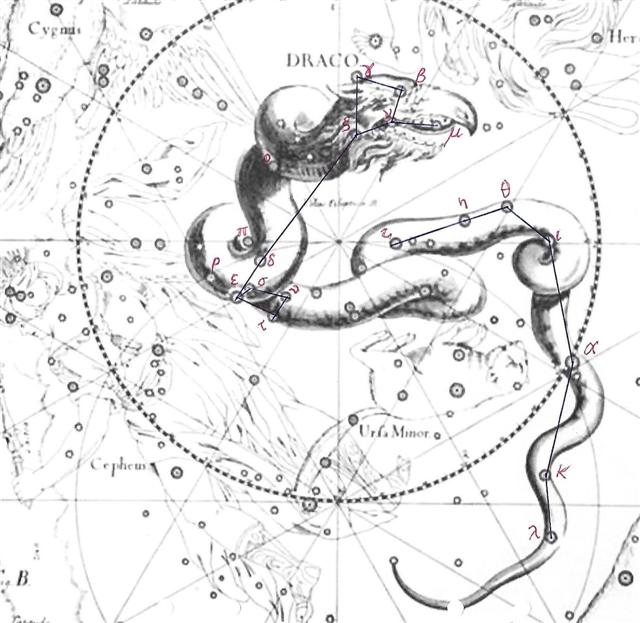 |
| Sept 9 (*172) |
10 |
11 |
12 |
13 |
14 (257) |
| °Sept 5 (*168) |
6 |
7 |
8 |
9 |
10 (253) |
| 'Aug 13 (*145) |
14 |
15 |
16 |
17 |
18 (2 * 115) |
| "July 30 (*131) |
31 |
"Aug 1 |
2 (214) |
3 |
4 (2 * 108) |
 |
 |
 |
 |
 |
 |
| Ga4-25 |
Ga4-26 |
Ga4-27 |
Ga5-1 (111) |
Ga5-2 |
Ga5-3 |
| 15 |
CLOSE TO THE SUN: |
| 0h (80) |
3-22 |
3-23 |
| APRIL 5 |
6 (80 + 16) |
7 |
 |
 |
 |
| Ga1-15 |
Ga1-16 |
Ga1-17 |
| λ Aurigae (79.0), λ Leporis (79.6), ρ Aurigae (79.7)
ARCTURUS (α Bootis)
|
Shur-narkabti-sha-iltanu-5 (Star in the Bull towards the north)
σ Aurigae (80.4), BELLATRIX (Female Warrior) = γ Orionis, SAIF AL JABBAR (Sword of the Giant) = η Orionis (80.7), ELNATH (The Butting One) = β Tauri (80.9) |
ψ Orionis (81.1), NIHAL (Thirst-slaking Camels) = β Leporis (81.7) |
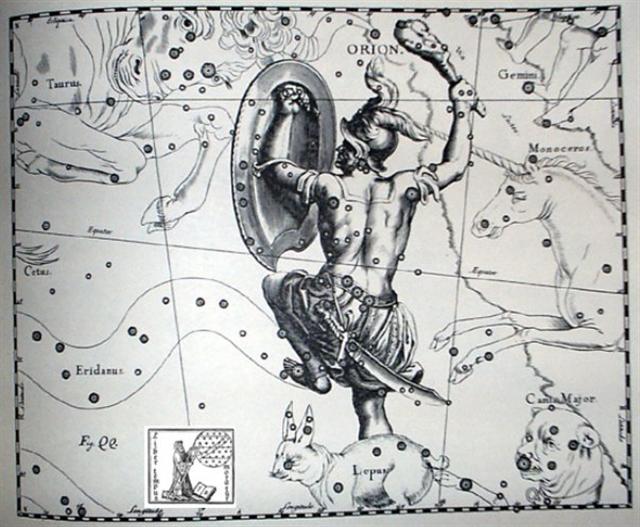 |
| June 8 |
9 (*80) |
10 (161) |
| °June 4 |
5 (156 = 2 * 78) |
6 (*77) |
| 'May 12 |
13 |
14 (*54) |
| "April 28 |
29 |
30 (*40) |
| CLOSE TO THE FULL MOON: |
| 9-20 |
9-21 (264) |
Equinox |
| OCT 5 (278) |
6 |
7 (*200) |
| ξ Ophiuchi (262.2), θ Ophiuchi, ν Serpentis, ζ, ι Apodis (262.4), ι Arae (262.8), ρ Herculis (262.9) |
β, γ Arae (263.3), κ Arae (263.5), σ Ophiuchi (263.6) |
LESATH (Sting) = υ Scorpii, δ Arae (264.7), CHOO (Club) = α Arae (264.9) |
 |
| Dec 8 |
9 |
10 (*264 = *81 + 183) |
| °Dec 4 |
5 |
6 (*260) |
| 'Nov 11 |
12 (*236) |
13 |
| "Oct 28 |
29 (*222) |
30 |
The figure at the beginning of the chain keeping Andromeda dead still is of the type takaure - similar to hoonu but significantly without legs:
|

|

|

|

|
|
hoonu |
takaure |
78 Pegasi |
vai |
... During his descent the ancestor still possessed the quality of a water spirit, and his body, though preserving its human appearance, owing to its being that of a regenerated man, was equipped with four flexible limbs like serpents after the pattern of the arms of the Great Nummo. The ground was rapidly approaching. The ancestor was still standing, his arms in front of him and the hammer and anvil hanging across his limbs. The shock of his final impact on the earth when he came to the end of the rainbow, scattered in a cloud of dust the animals, vegetables and men disposed on the steps. When calm was restored, the smith was still on the roof, standing erect facing towards the north, his tools still in the same position. But in the shock of landing the hammer and the anvil had broken his arms and legs at the level of elbows and knees, which he did not have before. He thus acquired the joints proper to the new human form, which was to spread over the earth and to devote itself to toil ...
... Greek, τρυω, τρυχω, to rub down, wear out, waste; τρυςω, toil, labour; τρυπα, τρυμη, a hole; τρυπανον, a borer, auger; τρυχος, a tattered garment, rags; τρυφη, softness, delicacy; θρυπτω, break in pieces. Liddell and Scott refer these words to τειρω, to rub, rub away, as derivatives of it, wear out, and τειρω, to the Sanskrit tŗi, to pass over, hasten, fulfil, &c. Benfey also concurs in that derivation when he refers τρυμα, a hole, and τρυτανη, the tongue of a balance, to the same tŗi ...

Legs were needed only after Land had been reached, after the Landfall and the journey across the sea had been completed, viz. when the Sun had reached the Wolf (The Opener of the Way, Upwaut):
| December solstice |
| 8 |
South Dipper |
φ Sagittarii (?) |
Unicorn |
(284.0) |
Dec 30 (364) |
| 9 |
Ox / Herd Boy |
β Capricornii (Dabih) |
Buffalo |
(308.0) |
Jan 23 (388) |
| 10 |
Girl |
ε Aquarii (Albali) |
Bat |
(314.8) |
Jan 29 (394) |
| 11 |
Emptiness |
β Aquarii (Sadalsud) |
Rat |
(325.9) |
Feb 9 (405) |
| 12 |
Rooftop |
α Aquarii (Sadalmelik) |
Swallow |
(334.6) |
Feb 18 (414) |
| 13 |
House |
α Pegasi (Markab) |
Pig |
(349.5) |
Mar 5 (429) |
| March equinox |
| 14 |
Wall |
γ Pegasi (Algenib) |
Porcupine |
(1.8) |
Mar 22 (81) |
| 15 |
Legs |
η Andromedae (?) |
Wolf |
(11.4) |
Apr 1 (91) |
... There is a couple residing in one place named Kui and Fakataka. After the couple stay together for a while Fakataka is pregnant. So they go away because they wish to go to another place - they go. The canoe goes and goes, the wind roars, the sea churns, the canoe sinks. Kui expires while Fakataka swims. Fakataka swims and swims, reaching another land. She goes there and stays on the upraised reef in the freshwater pools on the reef, and there delivers her child, a boy child. She gives him the name Taetagaloa. When the baby is born a golden plover flies over and alights upon the reef. (Kua fanau lā te pepe kae lele mai te tuli oi tū mai i te papa). And so the woman thus names various parts of the child beginning with the name 'the plover' (tuli): neck (tuliulu), elbow (tulilima), knee (tulivae) ...
On Easter Island the Bay of Flies (Hanga Takaure) was located at the line of fire (Ko te Umu o te Hanau Eepe, The Earth Oven for the Thick-set Race)stretching north towards Mahatua:
.jpg)
However, according to Manuscript E the Bay of Flies (souls of the unborn) could have begun at Adhafera and have ended at Situla:
| CLOSE TO THE SUN: |
| 12-9 (343 = 7 * 7 * 7) |
12-10 (344 = 360 - 16) |
12-11 (3 * 115) |
12-12 |
12-13 |
12-14 (348 = 12 * 29) |
| X-MAS EVE |
DEC 25 |
26 (360) |
27 |
28 |
29 (*283 = *398 - *115) |
 |
 |
 |
 |
 |
 |
| Gb2-23 |
Gb2-24 |
Gb2-25 (280) |
Gb2-26 |
Gb2-27 → π |
Gb2-28 (54 = 378 / 7) |
| SITULA (Water-jar) |
*343 (= 7 * 49) |
MATAR (Rain) |
*345 |
*346 |
FOMALHAUT |
| CLOSE TO THE FULL MOON: |
| 6-10 (161) |
6-11 |
6-12 |
6-13 |
6-14 |
6-15 (166) |
| JUNE 25 |
26 |
27 |
28 |
29 (180) |
SIRIUS |
 |
 |
 |
 |
 |
 |
| Ga4-13→ 14 * 29˝ |
Ga4-14 |
Ga4-15 |
Ga4-16 |
Ga4-17 (100) |
Ga4-18 |
| Φ HYDRAE (*525) |
*161 (= 7 * 23) |
η CARINAE |
*163 |
*346 - *182 |
ALKES |
| He Anakena 18 |
19 |
20 |
21 |
22 / 7 → π |
23 (204) |
... They made camp and rested at the Bay of Flies for a week (etahi pohitu). On the eighteenth day of the month of July (Anakena) they went on from Hanga Takaure. They climbed uphill, went on, and reached Poike. When they arrived, they looked around and named (the place) 'Poike A Hau Maka'. They climbed up farther to Pua Katiki. When they arrived there, they looked around and named (the place) 'Pua Katiki A Hau Maka' ...
... But taka-ure basically meant not a horse-fly but the completion of a cycle - through a female agent capable of regenerating (in contrast to man who could only kill and not carry any off-spring ).
| Takaure. Fly; horse-fly. Vanaga. A fly; takaure iti, mosquito; takaure marere ke, swarm. Churchill.

|
| Taka. Taka, takataka. Circle; to form circles, to gather, to get together (of people). Vanaga. 1. A dredge. P Mgv.: akataka, to fish all day or all night with the line, to throw the fishing line here and there. This can only apply to some sort of net used in fishing. We find in Samoa ta'ā a small fishing line, Tonga taka the short line attached to fish hooks, Futuna taka-taka a fishing party of women in the reef pools (net), Maori takā the thread by which the fishhook is fastened to the line, Hawaii kaa in the same sense, Marquesas takako a badly spun thread, Mangareva takara a thread for fastening the bait on the hook. 2. Ruddy. 3. Wheel, arch; takataka, ball, spherical, round, circle, oval, to roll in a circle, wheel, circular piece of wood, around; miro takataka, bush; haga takataka, to disjoin; hakatakataka, to round, to concentrate. P Pau.: fakatakataka, to whirl around. Mq.: taka, to gird. Ta.: taa, circular piece which connects the frame of a house. Churchill. Takai, a curl, to tie; takaikai, to lace up; takaitakai, to coil. P Pau.: takai, a ball, to tie. Mgv.: takai, a circle, ring, hoop, to go around a thing. Mq.: takai, to voyage around. Ta.: taai, to make into a ball, to attach. Churchill. |
| Ure. 1. Generation; ure matá, warlike, bellicose generation (matá, obsidian, used in making weapons). 2. Offspring; brother; colleague i toou ure ka tata-mai, your colleague has turned up. 3. Friendship, friendly relationship; ku-ké-á te ure, they have become enemies (lit.: friendship has changed). 4. Penis (this definition is found in Englert's 1938 dictionary, but not in La Tierra de Hotu Matu'a). Ure tahiri, to gush, to spurt, to flow; e-ure tahiri-á te toto, blood is flowing in gushes. Ure tiatia moana, whirlwind which descend quickly and violently onto the ocean; whirlpool, eddy. Vanaga. Penis; kiri ure, prepuce, foreskin. P Pau., Mgv., Ta.: ure, penis. Ureure, spiral. Ta.: aureure, id. Urei, to show the teeth. Mgv.: urei, to uncover the eye by rolling back the lids. Churchill. Pau.: Ureuretiamoana, waterspout. Ta.: ureuretumoana, id. Churchill. H. Ule 1. Penis. For imaginative compounds see 'a'awa 1, 'aweule, ulehala, ulehole, ulepa'a, ulepuaa, ule'ulu. Kū ka ule, he'e ka laho, the penis is upright, the scrotum runs away (refers to breadfruit: when the blossom (pōule) appears erect, there will soon be fruit). 2. Tenon for a mortise; pointed end of a post which enters the crotch of a rafter (also called ma'i kāne). Ho'o ule, to form a tenon or post for the crotch of a rafter. 3. To hang. Wehewehe. |
... From a religious point of view, the high regard for flies, whose increase or reduction causes a similar increase or reduction in the size of the human population, is interesting, even more so because swarms of flies are often a real nuisance on Easter Island, something most visitors have commented on in vivid language. The explanation seems to be that there is a parallel relationship between flies and human souls, in this case, the souls of the unborn. There is a widespread belief throughout Polynesia that insects are the embodiment of numinous beings, such as gods or the spirits of the dead, and this concept extends into Southeast Asia, where insects are seen as the embodiment of the soul ...
... Men's spirits were thought to dwell in the Milky Way between incarnations. This conception has been handed down as an Orphic and Pythagorean tradition fitting into the frame of the migration of the soul. Macrobius, who has provided the broadest report on the matter, has it that souls ascend by way of Capricorn, and then, in order to be reborn, descend again through the 'Gate of Cancer' ...

|












.jpg)





